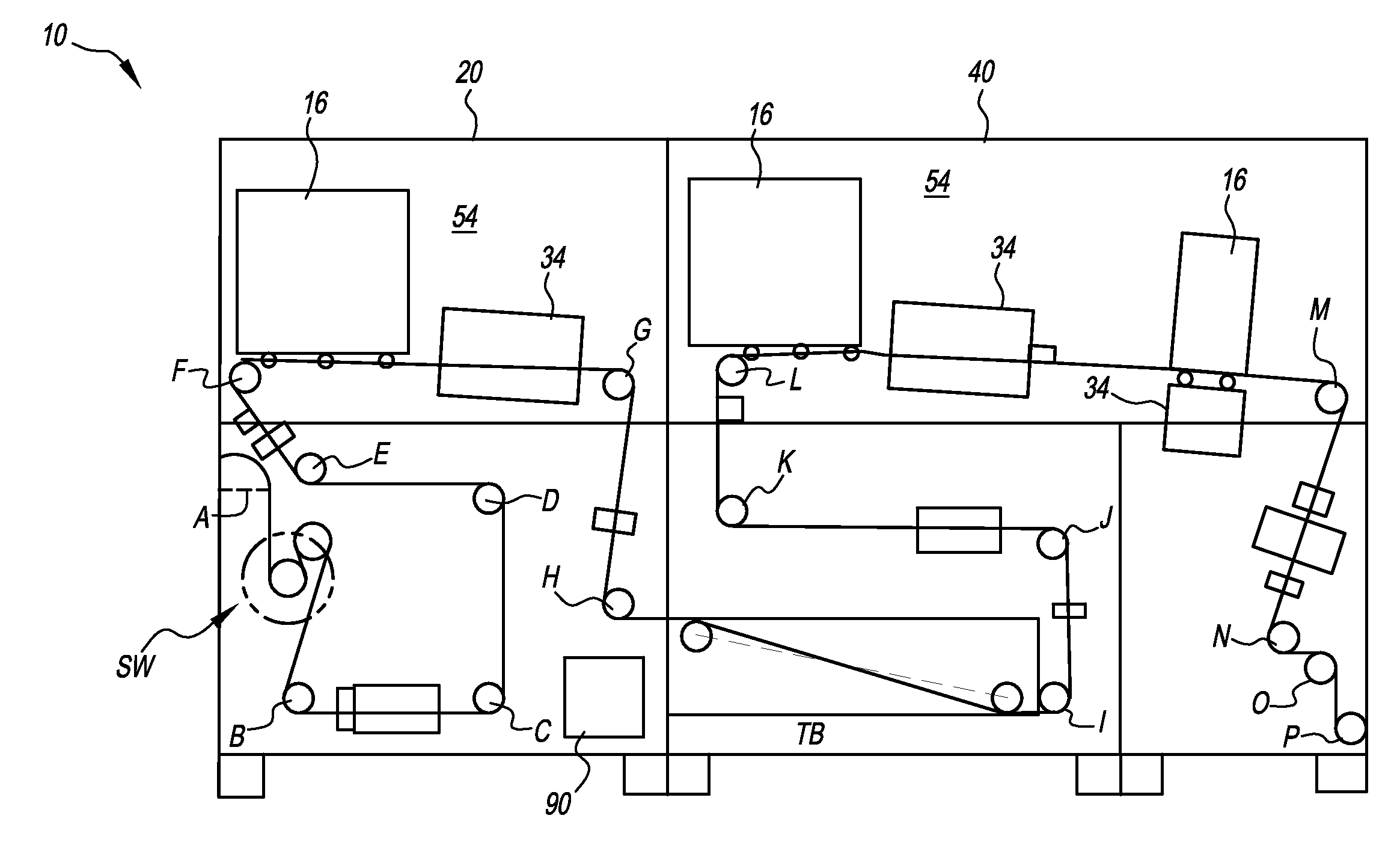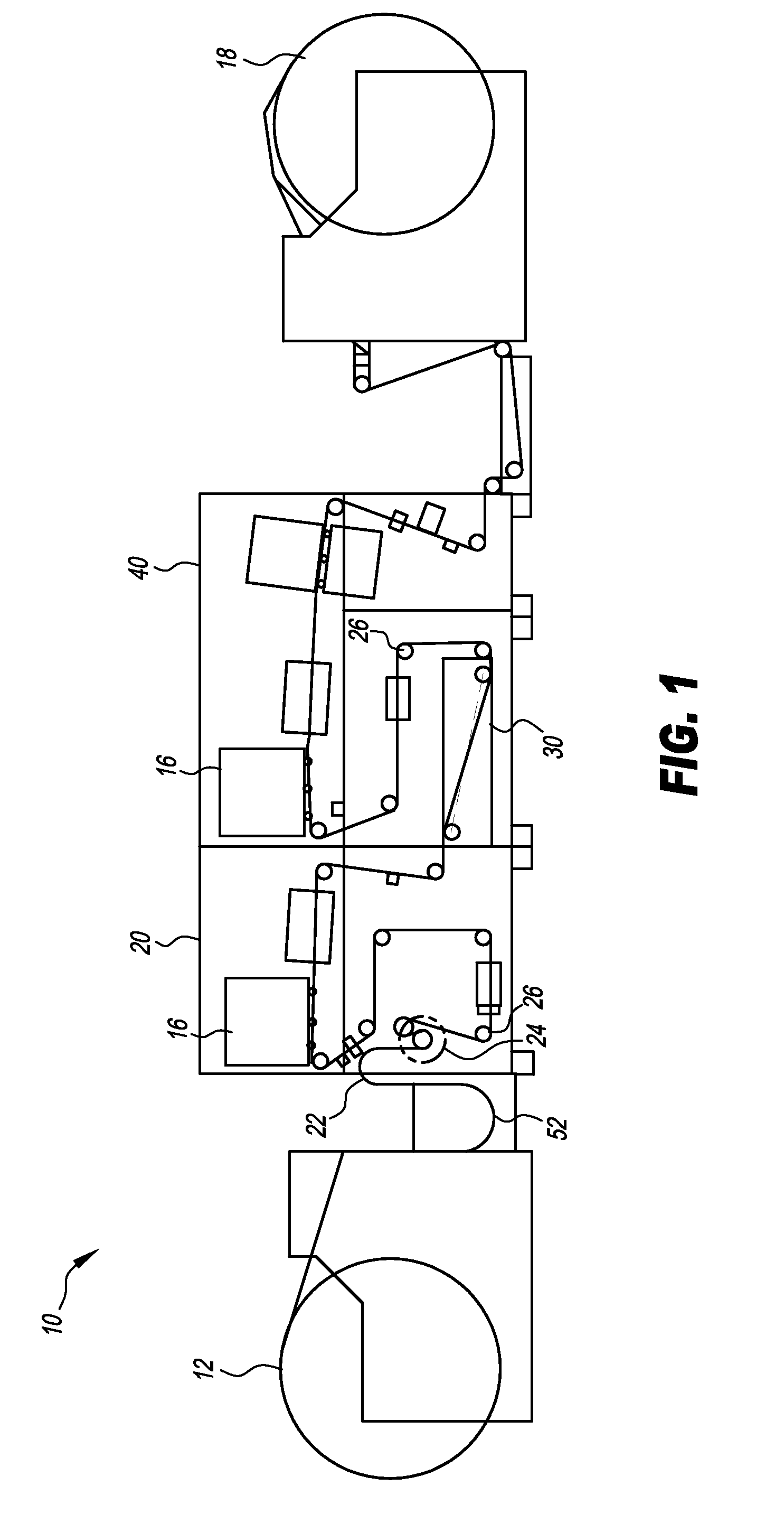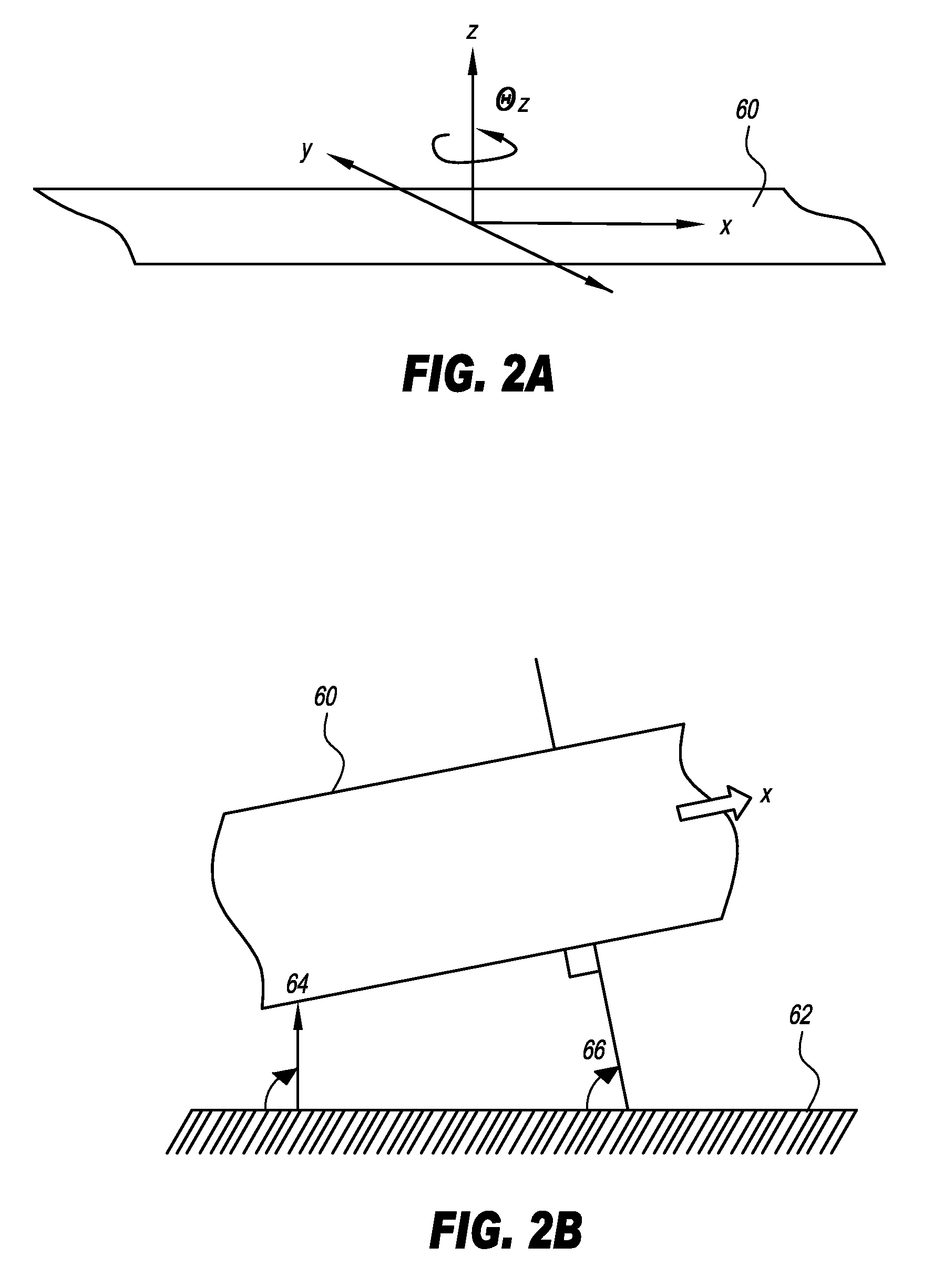Media transport system filter mechanism
a filter mechanism and media technology, applied in the field of printing apparatuses, can solve the problems of complex and costly alignment procedures for precisely adjusting substrate transport between components and subsystems, and the precision design of components, and achieve the effects of reducing or eliminating the negative impact of web edge defects on registration, accurate registration of printing media, and excellent web tracking performan
- Summary
- Abstract
- Description
- Claims
- Application Information
AI Technical Summary
Benefits of technology
Problems solved by technology
Method used
Image
Examples
Embodiment Construction
[0034]The present description will be directed in particular to elements forming part of, or cooperating more directly with, apparatus in accordance with the present invention. It is to be understood that elements not specifically shown or described may take various forms well known to those skilled in the art.
[0035]The method and apparatus of the present invention utilize features and principles of exact constraint for transporting continuously moving web print media past one or more digital printheads, such as inkjet printheads. The apparatus and method of the present invention are particularly well suited for printing apparatus that provide non-contact application of ink or other colorant onto a continuously moving medium. The printhead of the present invention selectively moistens at least some portion of the media as it courses through the printing system, but without the need to make contact with the print media.
[0036]In the context of the present disclosure, the term “continu...
PUM
 Login to View More
Login to View More Abstract
Description
Claims
Application Information
 Login to View More
Login to View More - R&D
- Intellectual Property
- Life Sciences
- Materials
- Tech Scout
- Unparalleled Data Quality
- Higher Quality Content
- 60% Fewer Hallucinations
Browse by: Latest US Patents, China's latest patents, Technical Efficacy Thesaurus, Application Domain, Technology Topic, Popular Technical Reports.
© 2025 PatSnap. All rights reserved.Legal|Privacy policy|Modern Slavery Act Transparency Statement|Sitemap|About US| Contact US: help@patsnap.com



